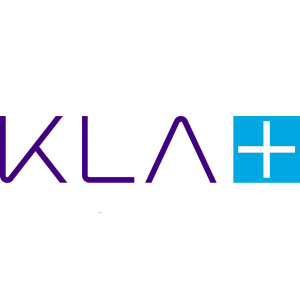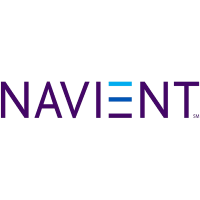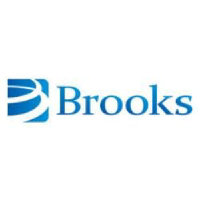
Atlas Copco AB
STO:ATCO A


| US |

|
Johnson & Johnson
NYSE:JNJ
|
Pharmaceuticals
|
| US |

|
Estee Lauder Companies Inc
NYSE:EL
|
Consumer products
|
| US |

|
Exxon Mobil Corp
NYSE:XOM
|
Energy
|
| US |

|
Church & Dwight Co Inc
NYSE:CHD
|
Consumer products
|
| US |

|
Pfizer Inc
NYSE:PFE
|
Pharmaceuticals
|
| US |

|
American Express Co
NYSE:AXP
|
Financial Services
|
| US |

|
Nike Inc
NYSE:NKE
|
Textiles, Apparel & Luxury Goods
|
| US |

|
Visa Inc
NYSE:V
|
Technology
|
| CN |

|
Alibaba Group Holding Ltd
NYSE:BABA
|
Retail
|
| US |

|
3M Co
NYSE:MMM
|
Industrial Conglomerates
|
| US |

|
JPMorgan Chase & Co
NYSE:JPM
|
Banking
|
| US |

|
Coca-Cola Co
NYSE:KO
|
Beverages
|
| US |

|
Target Corp
NYSE:TGT
|
Retail
|
| US |

|
Walt Disney Co
NYSE:DIS
|
Media
|
| US |

|
Mueller Industries Inc
NYSE:MLI
|
Machinery
|
| US |

|
PayPal Holdings Inc
NASDAQ:PYPL
|
Technology
|
Utilize notes to systematically review your investment decisions. By reflecting on past outcomes, you can discern effective strategies and identify those that underperformed. This continuous feedback loop enables you to adapt and refine your approach, optimizing for future success.
Each note serves as a learning point, offering insights into your decision-making processes. Over time, you'll accumulate a personalized database of knowledge, enhancing your ability to make informed decisions quickly and effectively.
With a comprehensive record of your investment history at your fingertips, you can compare current opportunities against past experiences. This not only bolsters your confidence but also ensures that each decision is grounded in a well-documented rationale.
Do you really want to delete this note?
This action cannot be undone.

| 52 Week Range |
150.8971
205.8
|
| Price Target |
|
We'll email you a reminder when the closing price reaches SEK.
Choose the stock you wish to monitor with a price alert.

|
Johnson & Johnson
NYSE:JNJ
|
US |

|
Estee Lauder Companies Inc
NYSE:EL
|
US |

|
Exxon Mobil Corp
NYSE:XOM
|
US |

|
Church & Dwight Co Inc
NYSE:CHD
|
US |

|
Pfizer Inc
NYSE:PFE
|
US |

|
American Express Co
NYSE:AXP
|
US |

|
Nike Inc
NYSE:NKE
|
US |

|
Visa Inc
NYSE:V
|
US |

|
Alibaba Group Holding Ltd
NYSE:BABA
|
CN |

|
3M Co
NYSE:MMM
|
US |

|
JPMorgan Chase & Co
NYSE:JPM
|
US |

|
Coca-Cola Co
NYSE:KO
|
US |

|
Target Corp
NYSE:TGT
|
US |

|
Walt Disney Co
NYSE:DIS
|
US |

|
Mueller Industries Inc
NYSE:MLI
|
US |

|
PayPal Holdings Inc
NASDAQ:PYPL
|
US |
This alert will be permanently deleted.
 Atlas Copco AB
Atlas Copco AB




















 You don't have any saved screeners yet
You don't have any saved screeners yet

Ladies and gentlemen, welcome to the Atlas Copco audiocast for teleconference Q3 2021. [Operator Instructions] Today, I'm pleased to present CEO, Mats Rahmström; and CFO, Peter Kinnart. Speakers, please begin.
Thank you, operator. Good morning, good afternoon, everybody, on this quarterly results call for the third quarter 2021. We will start with a short run-through of the results of this third quarter. But before I pass the word to Mats Rahmström, [Operator Instructions]. Thank you. And I leave the word to you, Mats.
Thank you so much, Peter. First quarterly call with you. Exciting. To no surprise to all of you, we have the vacuum pump to the semi industry on the front page. If we then go to Slide #2, we can look at Q3 in brief. And as you have seen, orders received on a very strong level, 36% growth, SEK 33 billion. It's very awesome. Yes, we can say that we compare still with the corona year, but last year, I think it was SEK 24 billion, so not a bad quarter for us. And we could see growth in all business areas, so it was not only semi, and in all geographic regions as well. Sequentially, of course, semi and some other segments continue to develop quarter-to-quarter. Equipment, in the most areas, we can see sequentially that is slightly down. And service is flat. Revenues. There are big challenges in the supply chains, and I must say that with the SEK 27.8 billion, considering what we see, we are quite pleased with that number and all the efforts going into that to please our customers. Profitability, 21.6%. Adjusted and comparable number, mainly adjusted for the LTI, 22%. Pleased with that as well. If we then go to Slide #3, it repeats many of the numbers that I've said. But looking at the graph maybe on the right side, you can see the last 3 quarters orders received being almost out of the scale. And in the beginning of the year, we said that we would compare with 2019 just to make sure that we don't compare with the corona year. But as you can see now, it's way above 2019 as well. Operating profit at SEK 6 billion, a good number for us. And return on capital employed increased to 27%. Then we have the geographic map on Slide #4, and it's green all over also, of course, compared to 2020. North America, very strong, double-digit growth for all our business areas. Latin America, Brazil continued to be very, very strong for us, 31% growth and double digit for all our businesses as well. Europe, 27%, double digit as well. And then Africa/Middle East, we had 2 of the big ones, Compressor Technique and -- developing really well. And then in Asia, very, very strong performance, 47% development. As you remember, China and Asia has recovered a lot in Q3 last year as well. So these results are very strong. Also there, we can see in all business areas strong development. On Page 5, you can see the organic growth for a number of quarters. For you that follow us a little bit closely maybe, 1.5 years ago, we discussed a little bit what to keep going into this slower period. We talked about keeping our investments in digitalization, which we have done; and the product portfolio; and also making sure that we continue to invest in our resources in sales and value selling. And we do see a strong correlation to the newer product portfolios and how that develops in a positive way. So I'm happy that we had the strength at the time to continue to invest in our customers' productivity. If we go to Slide #6, you get the bridge. And maybe the only new news is the currency impact of minus 2% for orders and minus 2% for revenues. And then you have a pie chart on Slide #7. And of course, with 93% growth for Vacuum Technique, they are gaining ground in the group. And then 18% for Compressor Technique, 17% for industrial and 23% for power. So this is just for you to see the balance of the different business areas. Then we go to each business area. We start with Compressor Technique on Slide #8. Very solid continued order growth year-on-year. Sequentially, you can see an order decline for equipment but service being flat. They actually had record revenues, 7% growth. Very pleased to that. And then I think super strong operating margin and also return on capital employed, 24.1% and 94% return on capital employed. And as you can see on the orders received, even if it was a slight decline from Q2, it's still the second best quarter we have had on orders received. Vacuum Technique on Slide 9. Of course, looking at the graph, it really stands out, the incredible development. We used to celebrate when we did SEK 6 billion. And as you can see now, it's quite a huge development here. So continued growth, 93%, and this was above our own expectation when we discussed this 3 months ago. Really strong development, of course, in semi but also industrial, and we continue to gain ground within service, linked to the given uptime on our products, of course.Revenues in par with last quarter, up organically 24%. Of course, we would like to deliver even more to our customers, but that is still a good number for us at this point in time. Operating profit at 24%, of course, supported by the volumes that we see. But also, with a 93% challenge for operations, you can imagine that we would have challenges in our supply chains and operations as well. Return on capital employed, very good development at 24%.We go to Industrial Technique on Slide 10. Continued growth there as well at 17%. And you can see both automotive and general industry being strong and continued growth for service. Sequentially, though, we could see that general industry then, together with what we discussed before, the semi, this is one of the segments that stands out a little bit here. Revenues stand at 7%. And operating margin, including these acquisitions that we have done that still dilutes bottom line, at 20.7%. And the return on capital employed at 15%, which is also linked to the recent acquisitions.On Page 11, you have Power Technique. Of course, there is seasonality in that business, but still strong growth at 23%. And revenues increased organically with 13%. I'm very pleased to have operating profit margin at 16.5% and also the development of return on capital employed at 25%. So good performance from them as well. And then we summarize the profit highlights. This is on Slide 12. If you go down to the EBITA, and in our case, it's amortization on intangibles only, to give you guidance on that, it's 22.9%. And then you recognize the number at SEK 6 billion and 21.6%. I think I should hand over to you, Peter.
Thank you, Mats. As you can see on the net financial items, there has not been really any movement that was worthwhile mentioning, resulting in a profit before tax of SEK 5.9 billion. The tax -- income tax expense ended up being higher than last year, which is, of course, on the one hand, due to the increased profit from the operations, but also you see a slightly higher tax rate related to some impact from the U.K. tax increase expected on our deferred tax liabilities in pensions. We, at this point, see, in the near future, probably a slightly lower tax rate for the coming quarter. But in the long term, we would rather see the taxes going up as nominal tax rates are increasing. Basic earnings per share are at SEK 3.74. As mentioned, return capital employed, 27%, and the return on equity increased to 30%. Going to Slide 13. Looking at the profit bridge, where we moved from 19.2% to 21.6%. As you can clearly see, the main impact contributors to this effect is the organic impact of volume, price, mix and others that contributed mostly to this. We had a slight positive impact from currency, which is actually slightly better than what we had anticipated in the Q2 call. But at the end of the quarter, the dollars changed to an extent that it actually turned positive. Looking forward, we would expect a rather flattish development of the foreign exchange impact, all things remaining equal. Acquisitions were slightly dilutive, mainly coming from very recent acquisitions like Canadian Pump & Compressor but also Perceptron in Industrial Technique as main contributors. But that's, of course, not so surprising as we typically see higher costs in the beginning of the acquisition in order to invest to be able to harvest later from the synergies. Items affecting comparability was costs related to restructuring in Industrial Technique business area in 2020, and that I think is explaining the development of the profit bridge. Going to Slide #14. You see a bit more detail on the different business areas. My conclusion here is that you see basically the same development across all the business areas, mainly that the volume, price and mix is the main contributor to the positive improvement of the margins in the respective business areas. Maybe one side comment to be made on Vacuum Technique, where given, as Mats already mentioned, the spike in growth of over 90%, it is not so surprising that for the Vacuum Technique business area, it has even been more challenging than for the other business areas to cope with the supply chain constraints and the very fast ramp-up. Going then to the balance sheet. I think very few fundamental changes to be noted here. On the one hand, on the asset side, I would say that the working capital has gone up slightly, which is, of course, very much linked to the volume development that we have seen. In fact, we would rather see -- like to see a bit higher inventories as it could probably support a better output going forward. Otherwise, on the asset side, obviously, the cash is the big item that stands out compared to September 30 last year, thanks to the very strong cash generation. On the liability side, basically, the main change is on the equity, coming from the results; and on the noninterest-bearing liabilities, which is, on the one hand, accounts payable that have gone up similar to the working capital on the asset side and also the still pending payment of the dividend or half of the dividend, which will be paid on the 28th of October of SEK 4.4 billion approximately. Going to the cash flow on Slide #16. The operating cash surplus has developed positively, thanks to, of course, the operating profit going up together with the increased revenues. Otherwise, the main difference between this quarter and the same quarter last year is the change in working capital, where, last year, we were enjoying a very positive development on particularly inventories and receivables, which we were not repeating this year. And in fact, the working capital remained rather flat. And that is also then the reason why -- the good improvement in the operating cash surplus is basically offset a little bit by this change in working capital if we compare to last year, ending at SEK 4.7 billion operating cash flow compared to SEK 5.1 billion last year. And I think that summarizes it for the cash flow. Then I would like to hand over back to Mats with regard to the near-term outlook.
Yes. As we all understand, it's not super easy to look into the future coming from quite a number of strong quarters. But as we see it right now, we still see quite a high activity level from customers in the sales process, so pleased with that. On the other side then, we could already see in Q3 then the sequential development for equipment, which has a negative trend, and the constraints in supply chain. It's a challenge not only for us but also for our customers. So maybe that doesn't drive confidence in the business outlook as much versus a very strong Q3, but we still have to see a little bit what comes out of this. But this is the best we can see at this point, high activity level but maybe not as high as we have seen in Q3. I think that rounds off the short presentation of the quarter 3 results. Before I hand over to the operator, to help us have a smooth question-and-answer session, [Operator Instructions]. Thank you very much. Operator?
[Operator Instructions] And our first question comes from the line of Klas Bergelind of Citi.
It's Klas Bergelind at Citi. The first one I have is on the -- just how you ended, Mats, talking about sequentially weaker demand in Europe and Asia in CT in particular and the way you guide. I mean volumes are always a bit weaker in the third quarter sequentially because of seasonality. But it seems like, given how you guide a weaker demand from the third into the fourth, that there is underlying weakness; otherwise, I guess, you would have been guiding for flat demand sequentially. So just to confirm, this is the bottlenecks that are also impacting your customers so you are seeing basically, into the fourth quarter, slower underlying demand in Europe and Asia. I just want to confirm if I got that right.
I mean you connect activity to demand, and I guess, that's a correlation that you could do. We still see them in high activity level, but otherwise, you are spot on. We also know that there is seasonality which takes it down. But we see from the high level where we are right now, and it is linked to the constraints in supply chain. You also see a number of activities in China, of course, and that's why we guide as we do. So you're pretty much spot on.
Okay. Cool. Just very, very quick follow-up on that. So are you implicitly saying VT flat and rest of the business continuing sequentially down? Or are you making any sort of comment on VT and semis, Mats, within that?
No. We don't guide in that sense, as you know, but we are out there trying to catch every order we can on VT, of course. I mean seeing the 93% up and the main part being in semi, of course, we are very pleased with that, and we will try to stay close to the customer. So I think if the business will be there, we will most likely get our share of that, and that's very positive, I think.
Our next question comes from the line of Andrew Wilson of JPMorgan.
It's really, I guess, a follow-up on Klas' follow-up, in that sense. Just on the vacuum number, I mean, clearly, we've seen a super, super strong Q3. And I just wanted to know if there's anything that you would point to as -- in terms of that being exceptional, so particularly large orders or similar. Or whether, if we look forward -- and appreciating the number moves quarter-to-quarter, but is this a run rate that we can feel comfortable with as we kind of look out over the coming quarters?
No. But if you look back a number of quarters, of course, as I said also early in the presentation, that we were celebrating a level of SEK 6 billion, which we were quite pleased with and had a very good operating margin on that level. Of course, it is an exceptional level to the business that just takes off a 93% growth organically for us. I mean, I think the question will come anyway in how much preordering is it. And of course, everyone likes to get in line to get their product. And for us, it's extremely difficult to know if a customer order is for an actual project or he just adds a few pumps for -- as a backup. So I think we all have to wait and see. And what I think you can trust is that, and I think we have shown it over and over again, that we are quite good at adjusting cost structure when needed and deliver a good margin then, although, as you can see, that we are challenged of course, with machining capacity, supply capacity on the semi side. It's almost like you've been running flat out for a couple of quarters and we get another quarter that is even better, of course. And then it's suddenly, at the point when you have used all your ideas, you have gone from the 80% utilization to flat out, it's difficult to, "Yes, okay, let's do another shift" because there is no other shifts to add, there is no extra machines left. So you almost need to be able to predict 12 to 18 months ahead of time that this would have happened, and we couldn't predict that. And I don't see -- I haven't anybody else that this would really take off likely. So it's an unusual scenario, but I think we're ready for what will come in our way. But it's uncertain.
Our next question comes from the line of Daniela Costa of Goldman Sachs.
It's mainly a follow-up, I guess, to some of the questions earlier. But given the visibility you have at the moment, I guess, into how the supply chain issues are, would you say that this demand is something you expect into 2022, these very big order gaps that you see now in terms of delivery? Or is there a risk that the demand never materializes? Orders don't turn into this -- to what extent, I guess, are also the sales more dependent on your suppliers rather than yourself?
Yes. No, I mean, as you could see from the quarters, we built another SEK 5 billion of orders on hand. That's a challenge for us considering that we -- both VT and CT were at record levels in terms of output. I also would like to know exactly what supply we will get from everyone, but it is a scenario right now where you have -- if I take the -- some of the core components, it's still difficult within electronics and chips. It's difficult with electric engine. It's difficult with diesel engines. And those are some of the core parts. But then what happens right now is that even -- it becomes shortages of commodities, which could be [ ceiling and overing compact zone ] or anything like that. So it's actually quite difficult. So if I only would predict on the core, it might be more helpful. But as we see it, when we talk to our business right now, no one is saying, "Well, it's getting easier." But they're not saying it's getting worse either, but they foresee Q4 to be very challenging. And then, Daniela, I think I need to get back to you in 3 months' time to see, okay, will this continue into '22 or not. But right now, we see Q4 to be difficult on the supply chain as well.
Can I do a follow-up?
Go ahead.
Yes. So -- and then maybe just asking on your customers as well. I guess they are also having broader supply chain issues in their projects. Are -- does that have anything to do with also the difficulty in doing the full sales delivery now? Or is it just purely upstreams?
I think we didn't fully understand the question. Could you please repeat, Daniela?
Sorry. I think there's also some echo. I was asking whether like the gap between sales -- orders and sales -- and you mentioned obviously all the supply chain issues in terms of like getting, I guess, inputs into your product. But I was wondering if there is any delay in terms of like being able to recognize sales because your customers also have other associated supply chain issues and they can't maybe take the product. Or is it -- when I said upstream, is it all inputs getting to your products or customers led basically?
I haven't heard that. I actually think that customers are quite willing to accept deliveries right now. And they are also on the level where we, from time to time, need to go back to the customer to say that we have redesigned something to make sure then that we check with the customer. They're also willing to do that. So no, I don't think that is a big issue. If we have products, it's probably delivered, too.
And our next question comes from the line of James Moore at Redburn.
My question is on revenue recovery next year really. Without being precise, I'm just trying to understand how that could look. So I think this year, you've done SEK 96 billion of orders and SEK 81 billion of sales. That's a very unusual gap. So we're seeing very good orders but you can't get revenues out and invoice it because of the supply chain constraints. So that's very clear. My question is really twofold. Do you see 4Q revenues having the same degree of constraint? And as you look into the -- for the year '22, if China reopens and supply chains open up, would you expect revenues to catch up in that year such that they close that gap and have a strong revenue year? Or do you think they spill into '23?
I think it's a very good question but also one that carries a lot of uncertainty obviously. I think what we see today is that the supply chains are, in the very short term, definitely not going to get much better, if not maybe slightly even worse. So that's probably for Q4, at least, what we expect. I mean reading what's out there, then I see that -- also that there's many people talking about that it moves also into 2022. Of course, if tomorrow all the supply chain issues evaporate, then we should be able to invoice and -- to produce and invoice significantly more than we have been able to do so far. But it's hard to evaluate exactly, of course, when that is about to happen. So I'm not sure if I can give you a very concrete answer to that question in that sense.
I guess there's another side to that, that you would invoice significantly more. But it goes back to your previous point that you're running at 100%. So how much do you have to CapEx and hire in that situation the supply chains did hypothetically free out. Would that be quite a limiting factor? And would it take a long time? Or could you do that quickly?
Well, I think when we look at the supply chain issues today, we strongly feel, and that is what we hear from the different business areas, that the one big limiting factor to do more is basically the supply chain issues and not so much the capacity at hand. So if supply chains would become more easy to handle, then we would be able, for sure, to have more output than what we have today.
I think when we asked the question specifically to our teams, it's like 80% of the issues we have is from our suppliers and 20% of the constraint is from ourself. I mean as long as it is assembly processes, we can always add people, we can add a shift. The problem is, of course, when you get into shortages in machine capacity since the ordering time for new machines is quite long today. That said though, of course, we have invested too during the year, of course, a lot in vacuum then to see if we can start to catch up and build on our capacity going forward. Because also, if you look at a longer perspective on semi, of course, we don't see, at this point, a full impact on cloud services. We don't see it on 5G. We don't see it on connected products. Of course, there can be bumps in the road as we have seen before, but the underlying demand for this product is strong and will probably be so for many years to come. So we are trying to match capacity versus a future scenario as well.
Our next question comes from the line of Guillermo Peigneux of UBS.
Maybe one longer-term question regarding electricity prices. I guess I'm trying to link the dots between 80% of life costs of a compressor associated with electricity and energy prices and the fact that we have a massive increase in electricity prices in Europe especially. And if one is correct, I think about 10% to 30% of the electricity consumption in a manufactured unit is compressed air. So I was wondering whether you are basically seeing any increased quotation activity because of clients trying to assess this problem as well in Compressor Technique, which is a very recent problem. Or is it something that at the moment you don't see as a concerning sign for your customers as well?
Do you want to go?
Yes. I think if I understood it well, I think it's about, of course, the rising energy prices and how that affects the Compressor Technique in this area. Given the fact that there's a long-standing tradition of constantly looking for energy efficiency in the products that we are launching quarter-by-quarter, in a way, higher energy prices are basically a positive for us as we would be able to reduce even more the payback time for the investment for the customers.
Yes. And are you seeing any of your customers asking questions about that? That's, I guess, my other question.
I think that it's always part of the sales conversation, and it's -- I mean, I think we normally say it's 70%, 75% of the running costs -- or the total investment is the running cost for the compressors. What we do see more and more maybe related to that, but that question we have always had, but we do see more questions regarding the CO2 footprint, that we can give the customer not only a financially better compressor but also with less CO2 footprint. And that is materializing and becoming a part of the sales discussion these days. And I would say that, that is accelerating quite quickly, which we see actually as beneficial to us as long as we introduce the most energy-efficient product. And the cost is -- always has an impact. And as Peter said, if the prices on energy goes up, the shorter the payback for a more energy-efficient product.
And our next question comes from the line of Alasdair Leslie of Societe Generale.
Just a question on margins. You kind of maintained a very high organic operational leverage for compressor and an acceleration in Industrial Technique as well. I was just wondering if you could give us more color on the drivers for each of those businesses, particularly the mix impact for IT. And if you could comment on ISRA VISION within that, whether that's had good underlying profitability improvement. And it looks like the supply -- I suppose the supply chain headwinds, the impacts of those are largely contained to vacuum. Do you kind of expect to see a rising impact on some of your other businesses, compressor, IT, PT perhaps in Q4? That's it really.
Yes. Maybe starting with the last part of your question. I would say that we see the supply chain constraints across all the business areas without any exceptions. And we have all our teams fighting on a daily basis to try to sort out these problems that they encounter, and many of them like pop out sometimes a bit out of the blue. So it's across all the business areas. It's not that the others are not affected by it. But it's fair to say, given the tremendous growth that we have seen from an organic perspective within Vacuum Technique, that, of course, the supply chain constraints are even more severe for them, let's say. So we would not say that we would see that expanding on the other business areas compared to what we see today, but we also would not see a fundamental improvement in the short term there either. Then when it comes to ISRA, ISRA, of course, as you know, has been acquired more than 12 months ago and is part of the Industrial Technique business area. And we only disclosed basically the information related to the business area performance. But what we are happy to say about is at least this -- that integration activities are going well and according to plan for the moment, let's say, with a good integration between the general industry, motor vehicle industry and ISRA R&D people as well as on the sales side. We are working closely together to, of course, leverage on the combined capabilities of the solutions that all the different divisions provide. So I think that's, with regard to ITBA, a bit on how the ISRA integration is going. And then I'm not sure if I still remember the first part of the question with regard to the flow-through.
Maybe just to add on ITBA as well. And of course, ISRA is still diluting the bottom line, as we said, as you can see as well. But in this quarter also, you had a positive mix in there.
I was just wondering whether that positive mix comment kind of was alluding to ISRA or there was something else perhaps.
No, I think it's more related to the biggest segment in this industry that it's out of -- related.
Yes.
And our next question comes from the line of Andreas Koski of Exane BNP Paribas.
I have a question on your comments about the sequential weakness. Do you think that sequential weakness is entirely related to supply chain issues? Or do you think we have started to see some sort of underlying slowdown?
I mean maybe the -- both these things go hand in hand, I guess. There is many of the quarterly reports that I'm sure you follow as well, and everyone is challenged with the same thing. So I think that is one thing. Separate, I think, on China, the shortage -- it's the biggest car market in the world, and you see the shortages of chips, of course, impacting that whole industry, not only in China. And at the same time, you can see that they have these difficulties with energy. So you can see shutdowns. And of course, if you have shutdowns, it's not good for the business confidence. So there might be a number of other factors, but the biggest one we see is the constraints in the supply chain and even making it difficult on what I would call commodity part. That is on the daily fight to make sure that we can supply our customers.
Okay. I know you don't have a crystal ball, but how long do you think those supply chain issues will be going on? And why would they ease in Q4 or Q1 next year?
No, we don't have a crystal ball, as you say. In some cases, I think for -- you need to increase your machining capacity to get more components up. And that's a little bit dependent on where we are on the cycle and of course, how the orders received will look like in Q4 and Q1. So I would only be guessing, so I wouldn't be able to help you much there.
And our next question comes from the line of Gael de-Bray of Deutsche Bank.
Is it fair to say that the supply chain constraints led to a revenue shortfall of about 5 or 6 points this quarter versus prior expectations or you -- the expectations you might have had before the quarter itself? And I was wondering if these tensions and shortages have mainly materialized in September, so really only 1 month being impacted? Or was it already visible throughout the quarter?
No. I think, if I understand, the constraints, of course, has been quite an ongoing issue. In terms of the possible output, of course, there is a number of businesses that has product in the auto industry, in the semi industry that is expecting deliveries later on, but that is extended lead times. And if I had all the components I wanted and all the labor I wanted, I'm sure we could have invoiced maybe SEK 1 billion or SEK 2 more billion easily. But I think that's as close as we can get at this point, and it's not really the focus for us to sit and try to predict that. We are going every day into this trying to make sure that we can help our customers to get their products on time. But I would expect it would be in that range if you had like a more normalized situation.
Okay. Just to be clear, so this was really an ongoing issue and the supply chain challenges have not really amplified towards the end of the quarter?
No, exactly. That is precisely what I said.
And our next question comes from the line of Sebastian Kuenne of RBC.
Out of respect for management and analysts, I will only ask one question. So in VT, the book-to-bill is now reaching 1.5 and 1.35 for the 9 months. Could you explain to us what the theoretical capacity would be at VT and explain where the plans -- or what the plans are for capacity expansion at VT?
So I'm looking at Peter. I'm sure -- I don't have those numbers available. But what I could confirm is that in the last 3 quarters, we have continued to invest in machining capacity mainly to be installed close to customers, where we have our operations. And by doing so, we are trying to catch up. But even though with the added capacity and the lead times for machining, it still will take time before we catch up on the orders on hand. And I'm not sure what's the normalized situation on max capacity. I mean it's the -- it's an all-time high, in par with last quarter or 2 quarters right now. So I guess that level is a level right now that is challenging for us. And then we need to add new capacity to get to the next level and hopefully sort out some of the key issues with some suppliers.
And our next question comes from the line of Joel Spungin of Berenberg.
I just wanted to ask very quickly a sort of broad question, but I don't know if you can give any color. But sort of thinking about the supply chain issues that you faced through Q3. Have they impacted the service and the new equipment side of the business in a different way? Or is it just being uniform across both parts of the business? I'm just curious to know, when hopefully they start to reverse out, how it might affect the revenue makeup going forward.
No, but that is -- you're right there since I said that service was flat. And of course, many of our customers are running their operations in a high utilization mode, so it's also impacting the logistics and the spare parts availability for those teams. So we cannot operate as efficiently as we would like to. Yes, I think that's the answer, that we could have more service sales as well.
And that's true across all 4 business units?
Yes, most likely. PT may be not suffering so much but it's a smaller part of our business. But IT, for sure; CT, we know; and VT, yes. So 3 out of 4 at least would probably see benefits of having better access to parts and better logistics.
And our next question comes from the line of James Moore of Redburn.
I wondered if I could go back to your outlook for sequential demand fall in orders in the fourth quarter, which doesn't surprise me. But your answer to Klas at the start, I didn't quite catch. But I guess my question is -- we've just had very high vacuum orders. Is the comment really a vacuum comment? And if you had to do a comment on compressor, which you don't do, would you think about compressor orders in the fourth quarter being roughly similar to that to the third? Or would you also see a sequential drop in the compressor environment -- or demand?
I think one of Klas' comments was that seasonality. If you read the number of years that has some impact on Q4, I think that was what we commented. And I think that the somewhat weaker than compared to third quarter is more extended than only VT. I believe we will see that in other business areas as well.
But I always thought -- in the past, you often commented on a seasonally adjusted basis. So I was thinking that you're not trying to signal it'd be worse than the normal seasonal drop.
Correct. I mean we normally build it into the -- that you would know that there is a seasonality, correct. And Klas confirmed that there is a seasonality in the numbers as we expressed it. Maybe I'm just confusing you, James.
No, that clarifies it.
And we have a follow-up question from Sebastian Kuenne of RBC.
On the raw material cost headwinds, could you confirm that the pricing environment is currently actually better or running ahead of what you have on cost increases? So you basically pass through costs at same pace or even faster than -- yes, faster than the cost increase, pricing rising faster than cost.
We are, of course, leading in many of our segments. And -- but it's more an openness and understanding for price increases, and we do go ahead with price increases. But then I would say that the main part for us is still value creation on new products, bringing in new products to a new price level but with also increased prices on existing ranges. So that we can confirm if it's fully matched or not, I guess you need to look at the bottom line in the coming quarters then to see that. But of course, we are trying to match that.
[Operator Instructions] The next is a follow-up from Joel Spungin of Berenberg.
Just one for Peter, just a quick one. I think you talked in your prepared remarks about the inventory levels and how those have increased, and that was obviously a positive in the current environment. Is that a process that's sort of now done? Or do you expect that you'll need to continue to invest more to grow the inventory levels further from here?
Do you mean our inventory levels, sorry?
Yes.
Okay. I mean right now, net working capital and inventory might not be the highest priority even if we're seen as a company trying to generate value creation. Right now, we would prefer to have slightly higher inventory on some parts. But as soon as we are through this, we will continue with the efficiency program, shortening lead times, being closer to customer, being [ looked for ], for our customers. So our intention is to take advantage of not only the EBIT but also the capital side of the business to continue to build value for the company. So -- but right now, of course, we are trying to find components wherever we can find them. So maybe not right now that we go after this in our organization. [ The priority ] is trying to find the components.
And we have further questions from Sebastian Kuenne of RBC.
Regarding IT, industry division. So also it's roughly 50% of the business. Could you explain a little bit how big the portion of EV and battery -- that block, EV/battery is as a portion of Q3 orders? I mean are we talking 5%, 10%, 25%? What's the development there?
I don't have exact numbers, but I think it's significantly more than that. And maybe the easiest way to get a view on that is just to look at the CapEx for some of the bigger car and truck manufacturers, how they invest. And main part of our investment is on the CapEx in the new -- from an operational standpoint, if they invest in [ fossil ] programs. I mean we do get orders for that as well. But I think the newest is linked, in one way, to the batteries, new models, hybrids. And if you define hybrid as an electric, I don't know. But I think it's significantly more that is related to this new generation of cars in terms of hybrids and electric. And that is also what I see when I look at Daimler or Volvo or anyone's investment, where they fund right now. So I think you can correlate that very much to our investment on new lines, new CapEx.
[Operator Instructions] As there are no further questions coming through at this time, I'll hand back to our speakers for the closing comments.
Okay. Thank you very much, operator, for helping us, guide us through the question and answers. As there are no further questions, I suggest that we can call the -- close the call here, sorry.
Thank you so much. Thanks for calling in, everyone.
Bye-bye. Cheers.